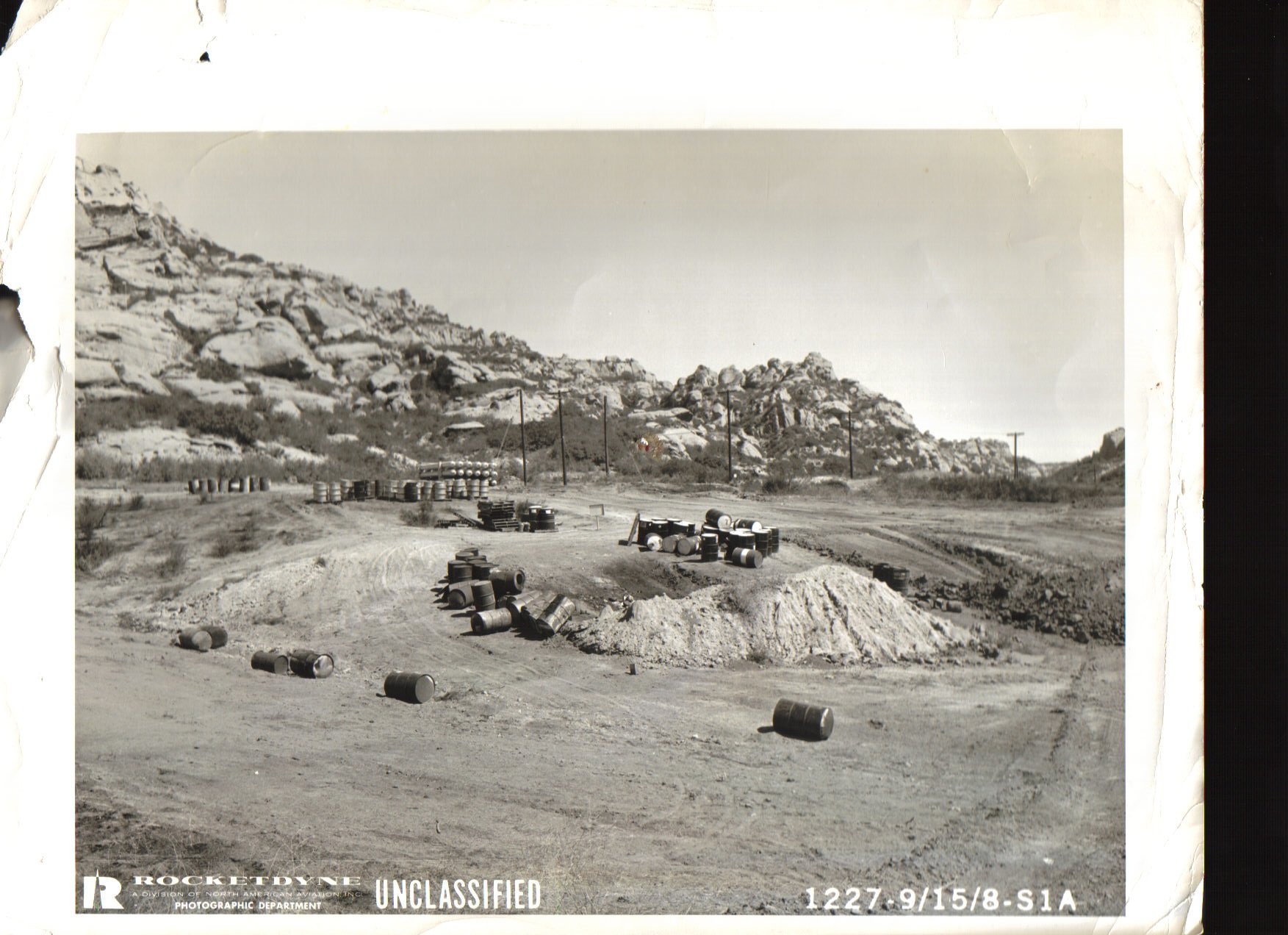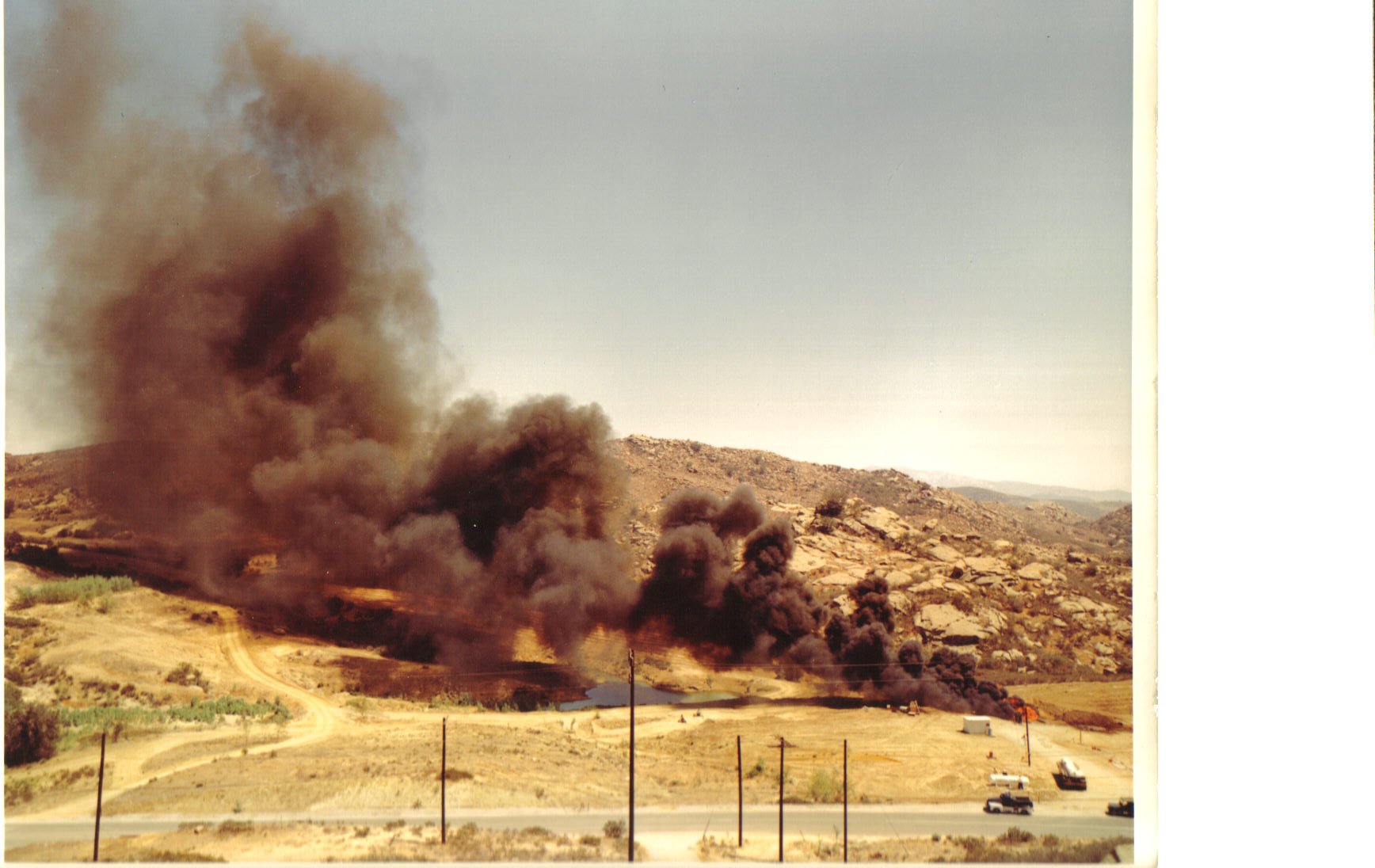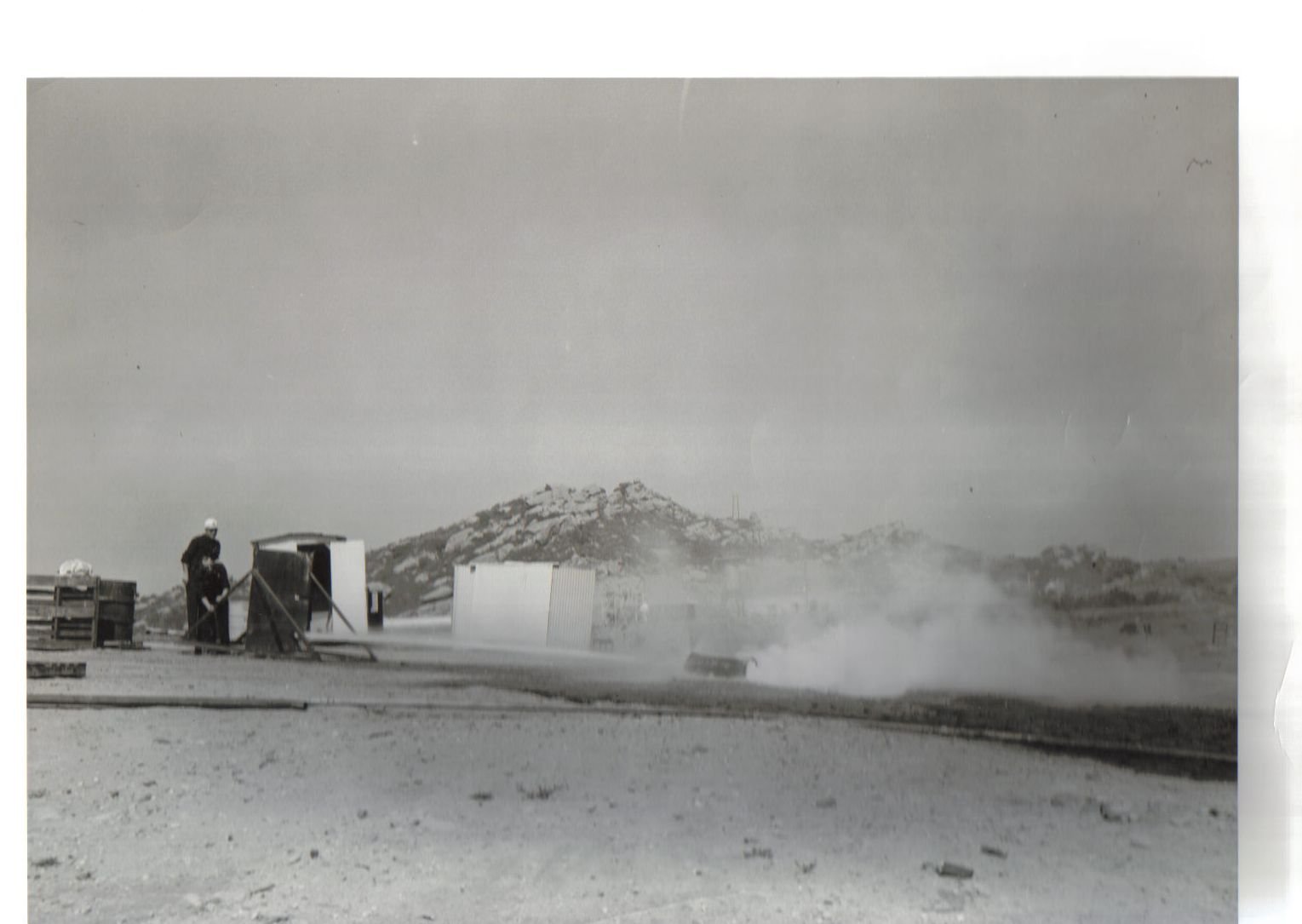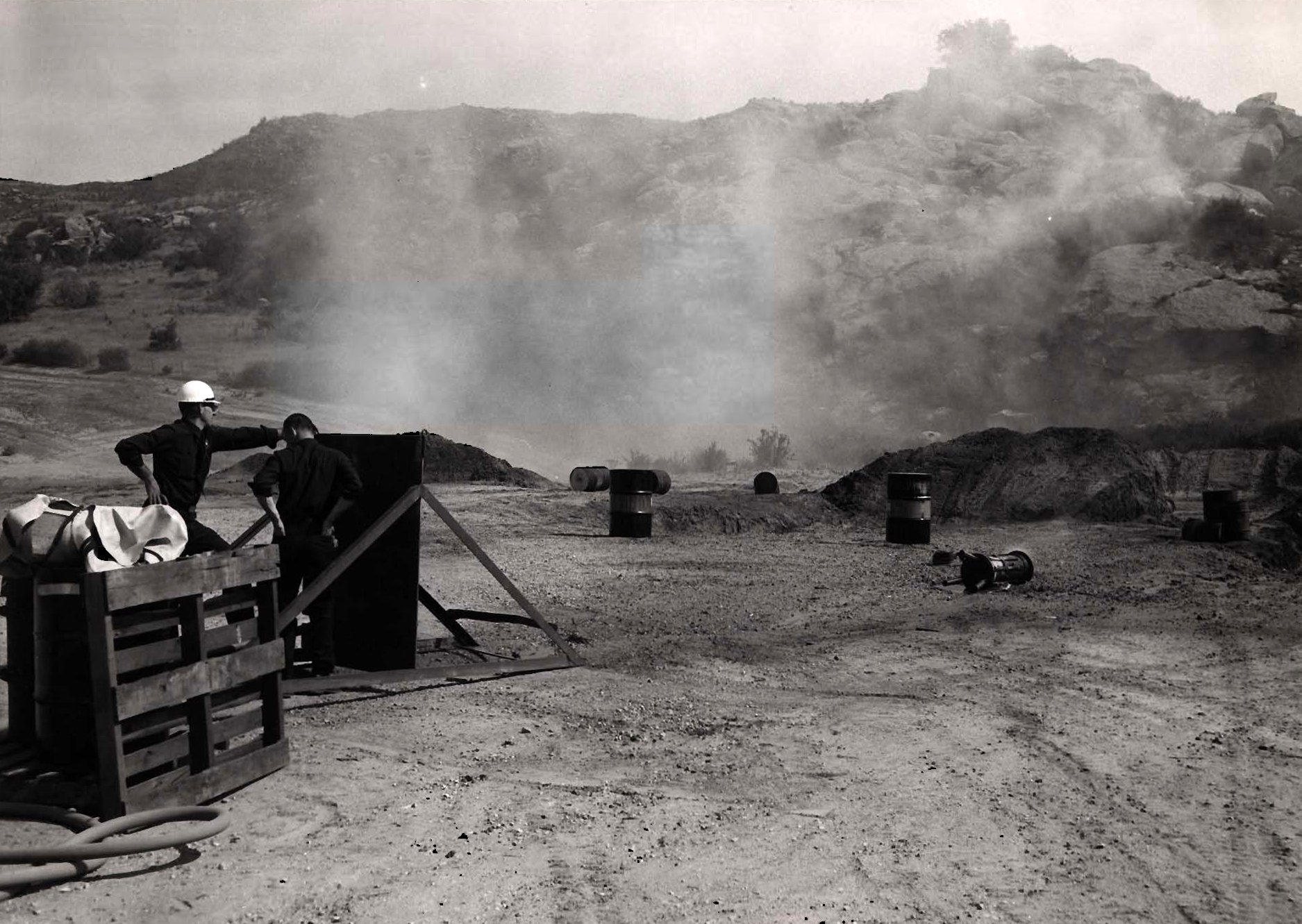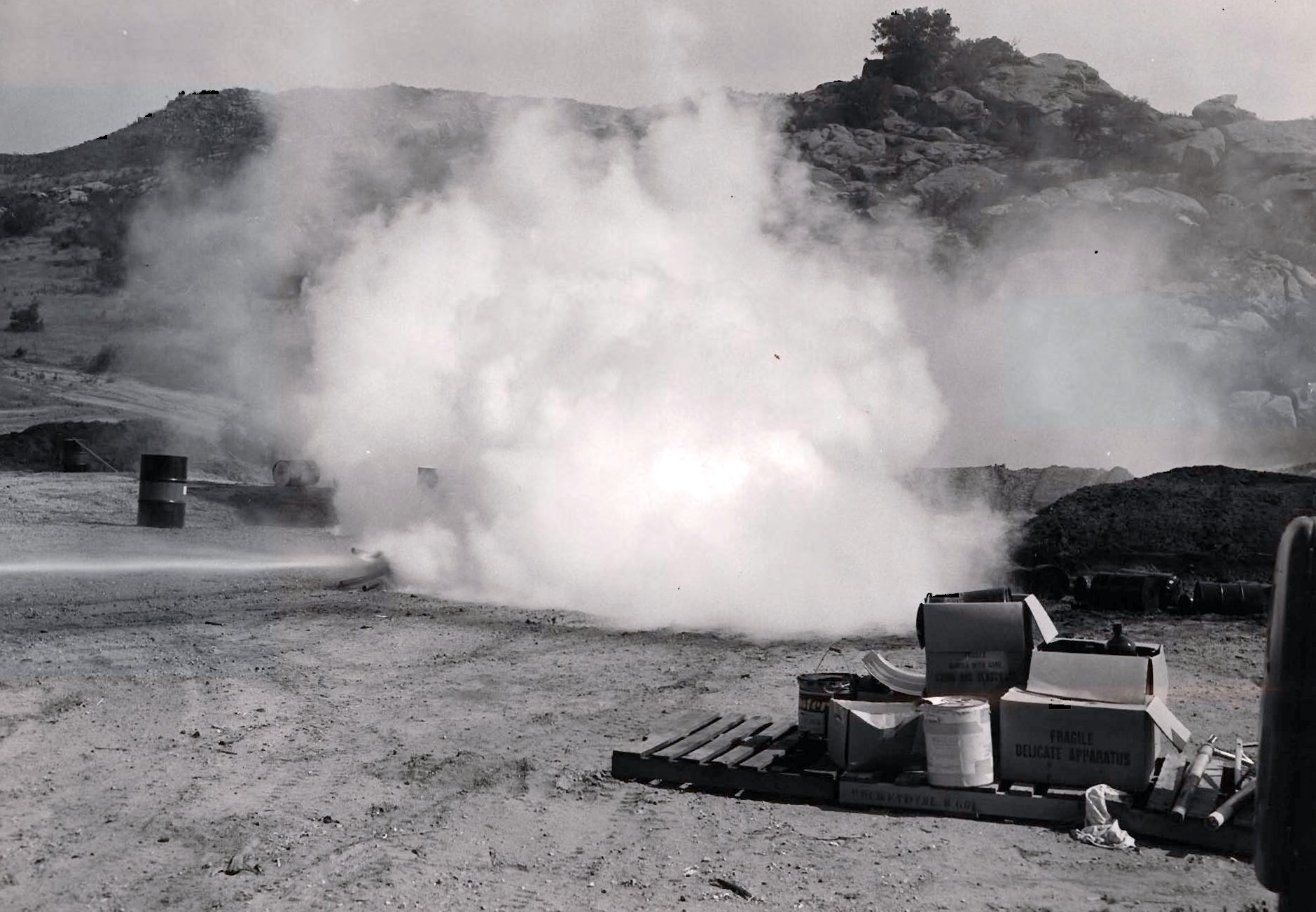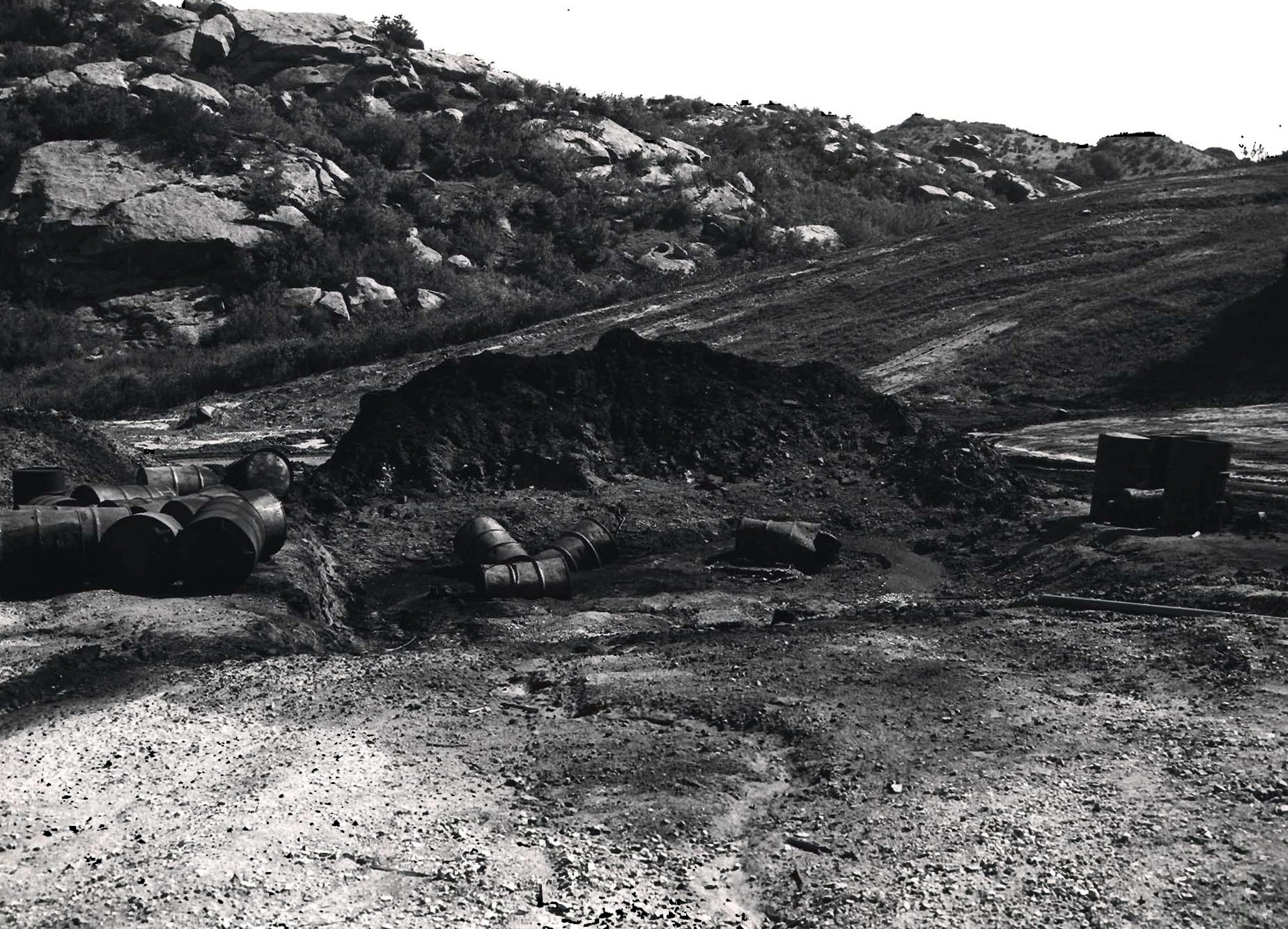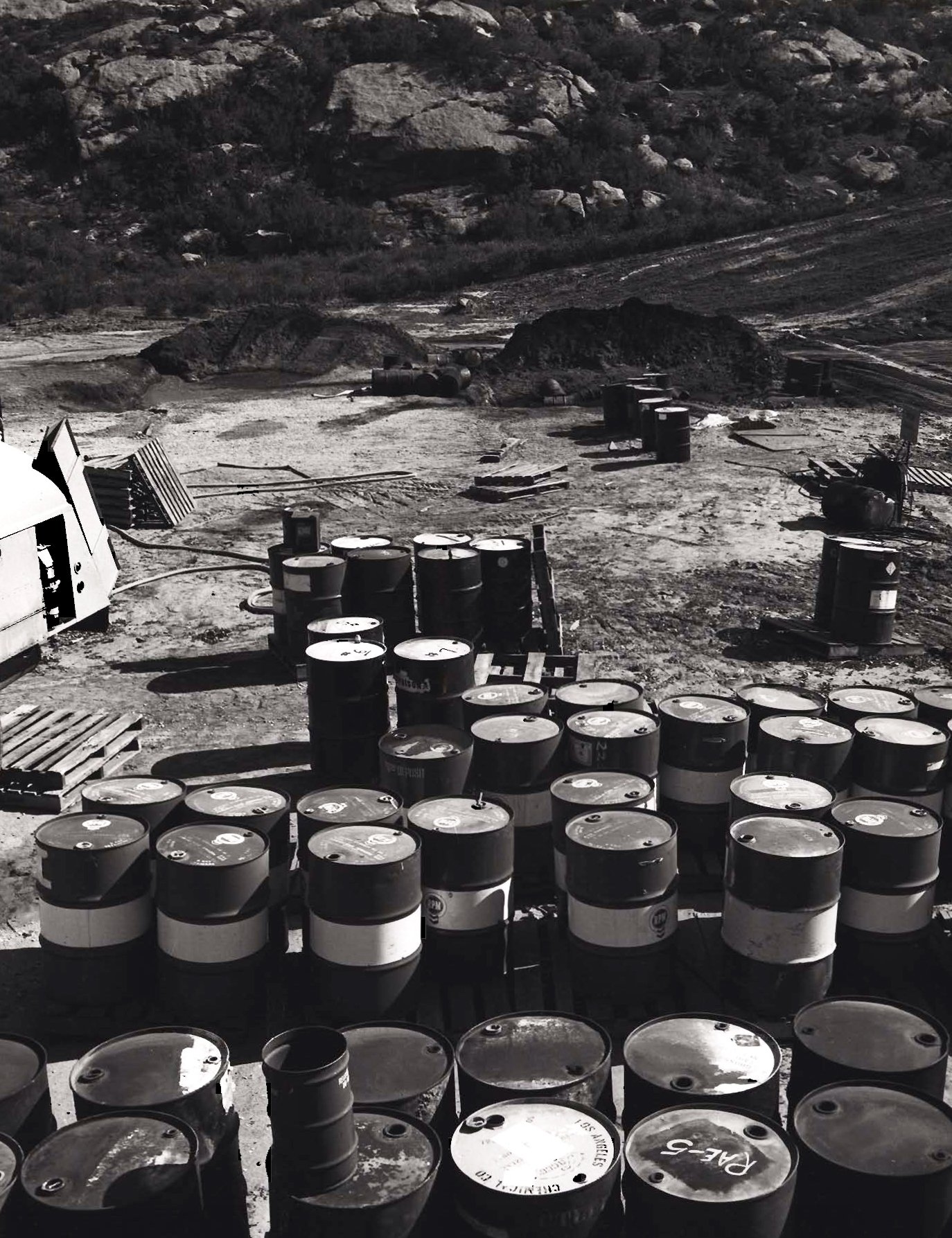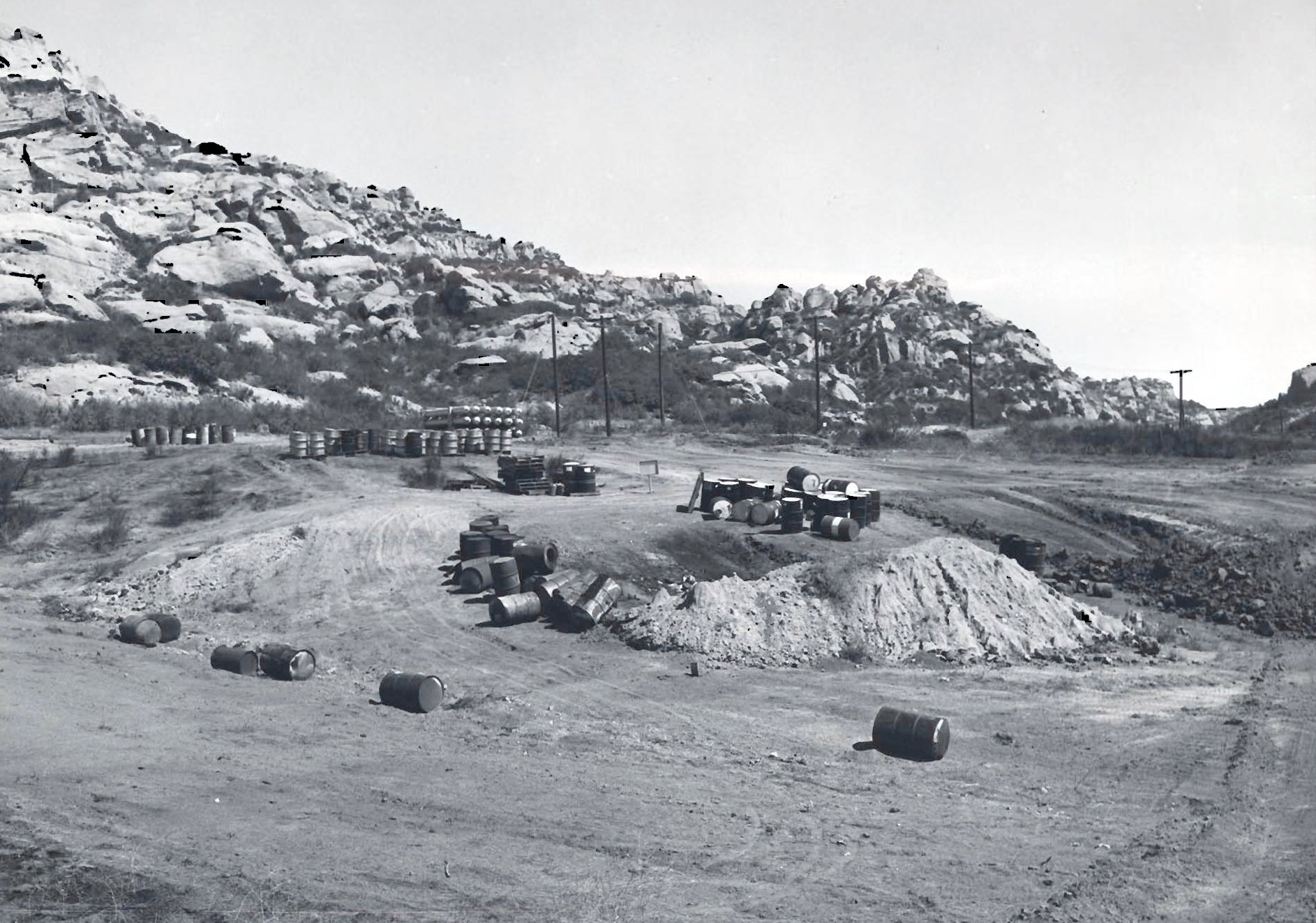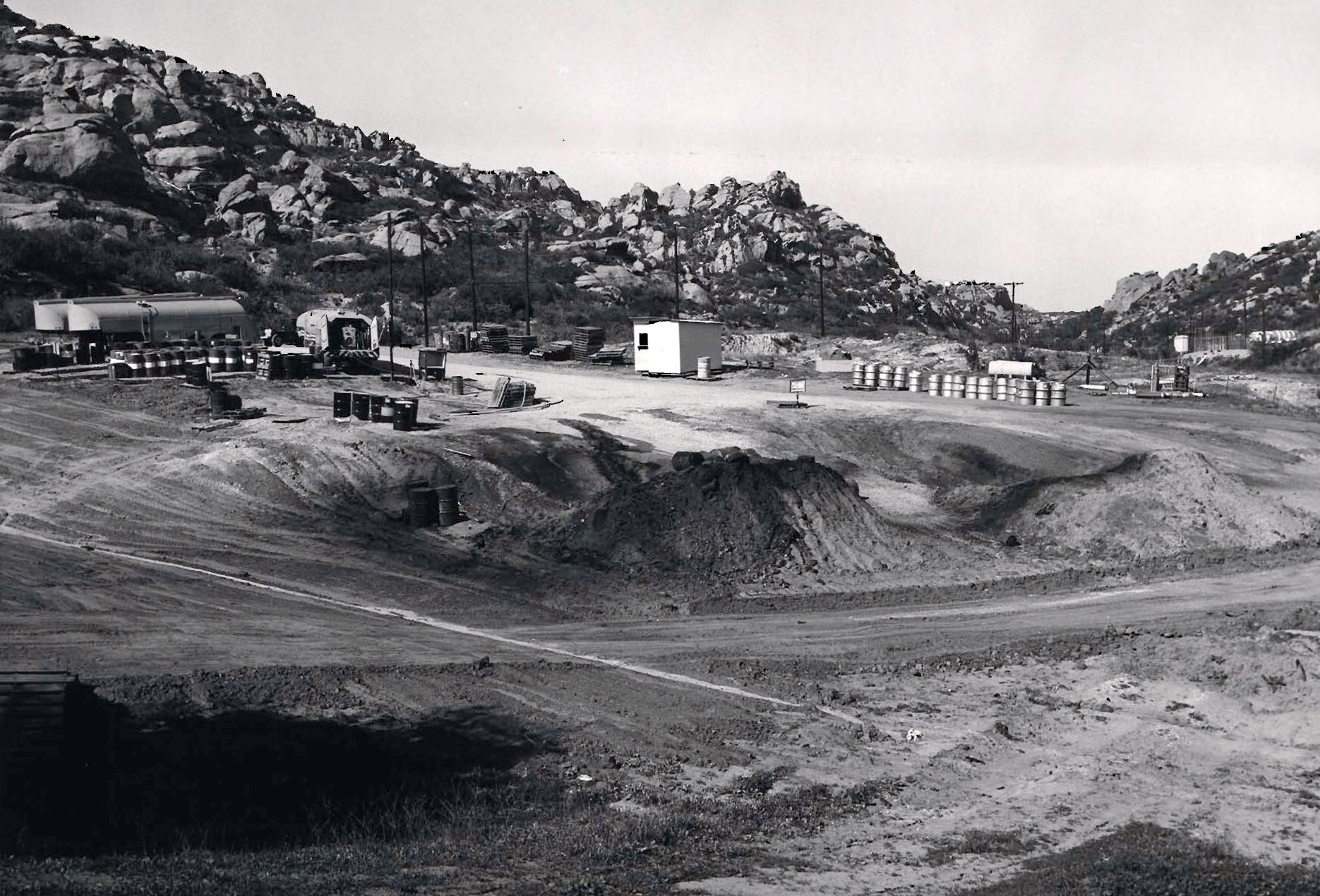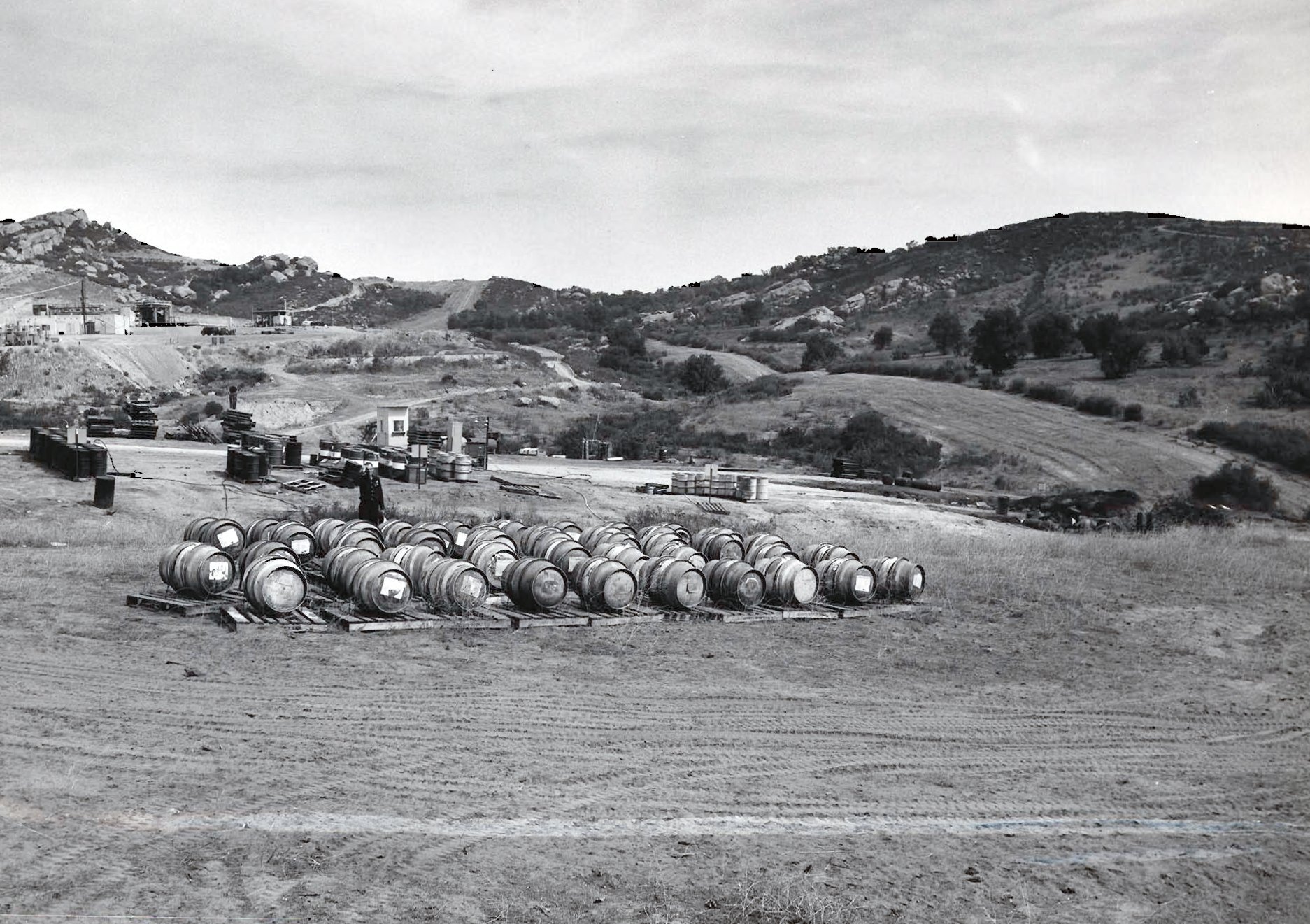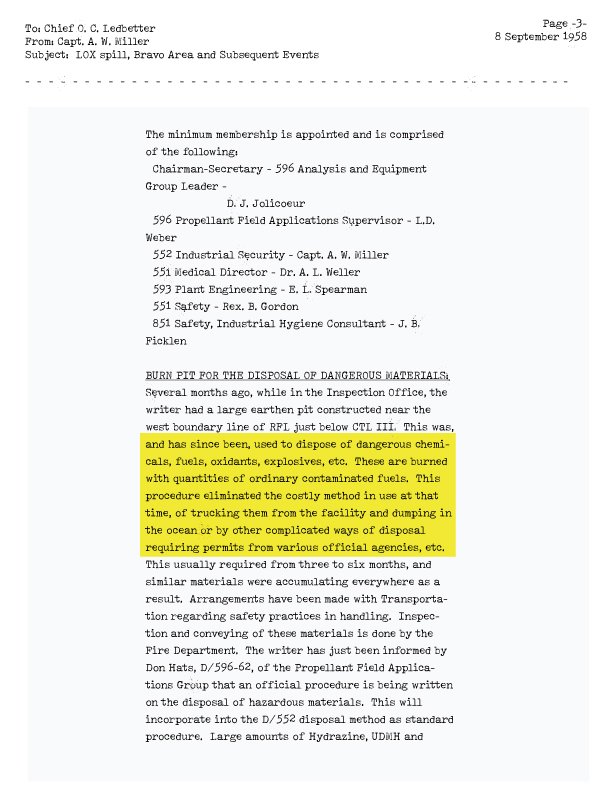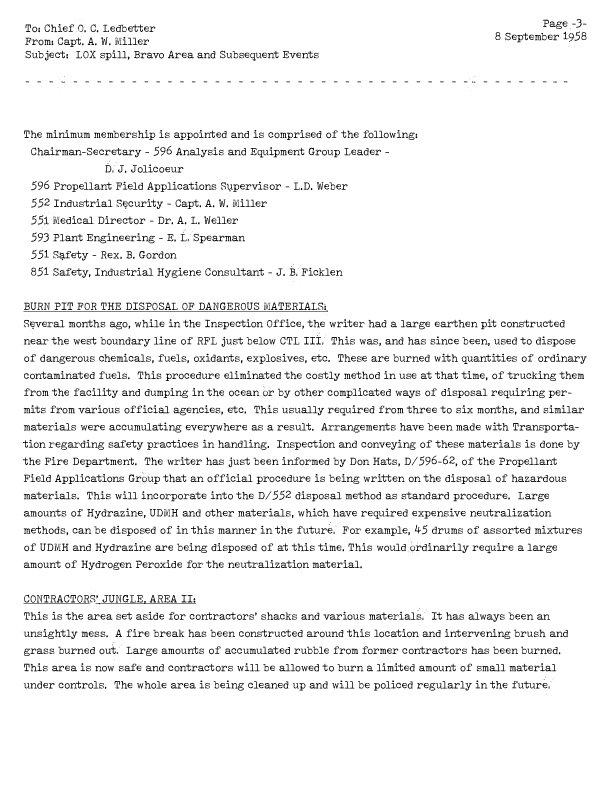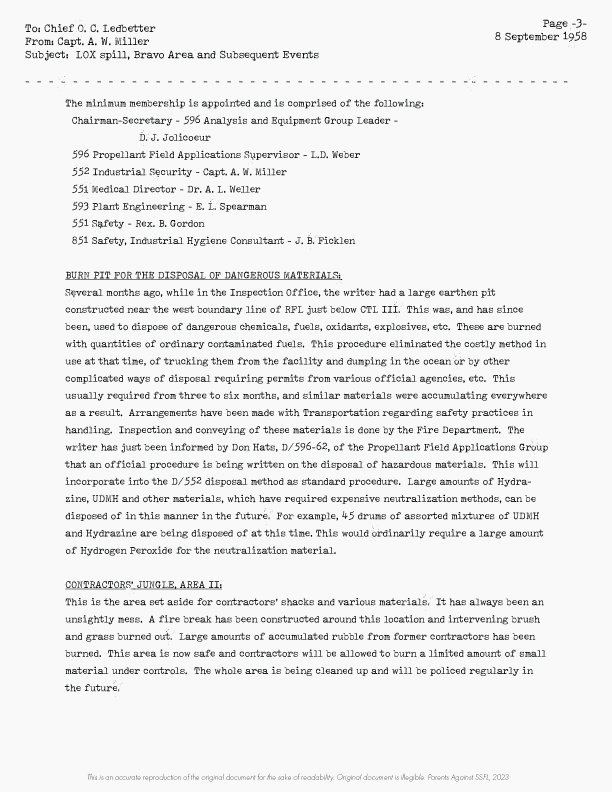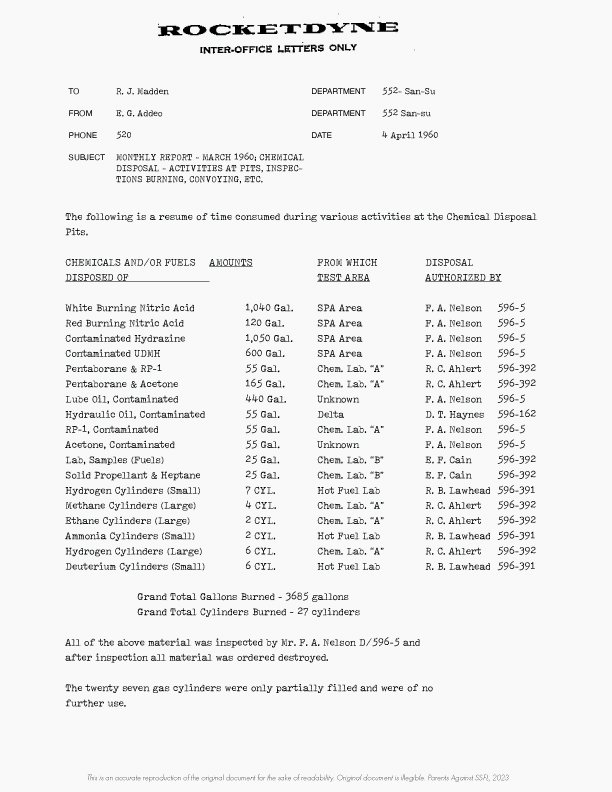Area 1 Burn Pit
Q: Where is the Area 1 Burn Pit (A1BP)?
A: The Area 1 Burn Pit (A1BP) is approximately 5.8 acres and is located in the southern portion of Area I of the Santa Susana Field Lab (SSFL). The SSFL is located in the hills above the San Fernando Valley and Ventura County. Over 800,000 people live within ten miles of the site. See how far you live from the A1BP here.
FYI, there is also an Area IV Burn Pit at the Santa Susana Field Lab, but it is not being addressed in this emergency cleanup Order.
Q: Why is it an emergency to clean up the A1BP?
A: The Department of Toxic Substances Control (DTSC) issued an “Imminent and Substantial Endangerment Order” because… actually, we’re not sure why. The A1BP has been dangerously contaminated since the 1960s. We don’t understand why they changed it from “Ignore it for Decades Status” to “Emergency Status.” Your guess is as good as ours.
We do know that the DTSC used Geotextile tarps over some of the A1BP areas to reduce rain runoff and to limit the wind from blowing the contamination off-site. The tarps burned off during the Woolsey Fire. Now the DTSC says that they should clean up the area instead of using tarps, as the tarps were never meant to be a final solution. That would be great, except their cleanup will leave most of the contamination behind…which appears to defeat the purpose of why this cleanup is considered an emergency.
We suspect that the real motivation for doing a partial “emergency” cleanup was to get around having to do the cleanup to “background,” or removing all contamination, at one of the most extensively contaminated areas of the SSFL.
Q: What kind of clean-up will the DTSC be doing?
A: DTSC is doing a partial cleanup because they claim people don’t live onsite, therefore, they don’t have to worry about the A1PB’s contamination harming them. People live right next to the site but the DTSC claims that health-harming contamination from the SSFL doesn’t go off-site (not even a smidge) so it wasn’t factored into the A1BP cleanup plans.
Instead, the DTSC ordered an ecological risk-based cleanup that will allow them to leave much of the contamination on-site. The DTSC acknowledged this but assured us that leaving contamination after the cleanup won’t harm the wildlife, even though toxic chemicals and radioactive waste aren’t safe for plants or animals. The DTSC is well aware the emergency A1BP cleanup is not a human health protective cleanup, which would remove all contamination.
The DTSC claims they will come back to remediate the rest of the A1BP site to human health standards later, but it’s unclear if they will.
Q: What are the dangers of doing a partial cleanup? Isn’t it good that they are at least doing something?
DTSC has broken so many promises to our community (such as finishing the whole site’s cleanup by 2017) that we seriously doubt their claims that they’ll come back and do a better job later. They told us verbally at a DTSC hearing that they would, but that’s worth as much as the paper it was written on. We think this is their way to leave one of the most contaminated areas permanently dangerous. Why? Because a complete cleanup would cost more, and they care more about money than they do about people’s health.
The risk of removing only some of the contamination is that it could result in loosening the soil they leave behind that’s still contaminated. The DTSC claims this won’t happen and that the remaining contamination won’t mobilize in the wind and rain, but we’re concerned that a partial cleanup may contribute to increased rates of contamination moving off-site. If they did a complete cleanup, we wouldn’t worry about what was left behind.
Q: Wouldn’t it be safer just to leave it alone?
There aren’t any good methods to keep the contamination on-site and keep it from migrating into the community where it can harm people. Concrete caps (giant concrete slabs), for example, break down quickly and they don’t protect the residents who live nearby. We’ve seen a toxic site where the DTSC had used a concrete cap and it was essentially a field of weeds. It was completely ineffective in keeping contamination in place. You can read this article about one community who was angry that they were getting a concrete cap because they don’t work as well as a cleanup.
The A1BP was used to burn experimental rocket engine fuels, toxic metals, now-banned pesticides, long-lasting chemicals, and radioactive waste. The site is extremely dangerous. And contrary to DTSC’s claims, the contamination doesn’t magically stay onsite. Because the A1BP’s contamination is “fallout” and is loose in the soil (and not stored in barrels or vaults) it can move easily from the wind, rain, or wildfires. A federally-funded study shows the SSFL has caused a 60% higher cancer incidence rate, which means the closer you get to the site, the higher your chance of getting cancer- because it gets offsite and into the community where it hurts people. Leaving the A1BP contaminated isn’t safe now and it won’t be safe for future generations who will be exposed to its long-lasting, dangerous chemicals and radioactive waste.
Outstanding questions
How will the soil be transported?
The soil will be taken in trucks. PDF page 845 in the Removal Action Work Plan goes into detail about the transportation plan for the A1BP, including:
The trucks will be rid of dust from the SSFL before leaving the site.
Transportation of waste will occur on arterial streets and/or freeways approved for truck traffic to minimize any potential impact on the local neighborhoods.
Will the trucks use tarps when moving the soil?
These containers were used in 1999 when Rocketdyne cleaned up the Sodium Reactor Experiment (SRE) area. They used sealed containers to transport the soil to a licensed, low-level radioactive waste facility. We’ve asked DTSC if they will be using containers like these during the current Area 1 Burn Pit remediation, and if not, what will they use? We’ll share the answers when we hear back.
What about dust mitigation?
DTSC said that soil-disturbing operations will stop if sustained wind speeds exceed 25 miles per hour for five consecutive minutes in a single hour. PASSFL recommends this be reduced to 13 mph (according to Perdue University)
Air monitoring, as part of the SSFL Site wide sampling, will be ongoing throughout the removal action.
PASSFL will ask about a tent with HEPA filters to be used during the cleanup; not only to guarantee safety but also peace of mind.
Cleanup Critiques
Contamination to be remediated (and not be remediated) at A1PB
The A1BP will not be a complete cleanup to “background”
In the A1BP Removal Action Work Plan (RAW), the DTSC lists 20 specific Contaminants of Concern that will be remediated during the emergency cleanup. Later in the document, there is a list of an additional 55 Contaminants of Concern known to be in the A1BP that could harm workers as they clean up the soil in the area. These 55 contaminants have been historically documented in the A1PB. The DTSC does not give any explanation as to why it will clean up only 20 contaminants when it’s clear there are other dangerous chemicals in the same soil.
The emergency cleanup will remove twenty Contaminants of Concern (COC) including:
Heavy Metals: Cadmium, mercury, molybdenum, nickel, and zinc
Polychlorinated biphenyls (PCBs): Aroclor-1248, and Aroclor-1254
Dioxins: 2,3,7,8-TCDD_TEQ_Bird and 2,3,7,8-TCDD_TEQ_Mammal
Volatile Organic Compounds (VOCs): Pentachlorophenol, Trichloroethene (TCE), and 1,1-dichloroethene
Radiological: Europium-152, Plutonium-238, Plutonium-239/240, Thorium-230, Thorium-232, Uranium-233/234, Uranium-235/236, and Uranium-238
The emergency cleanup will not remove fifty-five Contaminants of Concern (COC) including:
Inorganic Compounds: Arsenic, Acetone, Aluminum, Antimony, Barium, Beryllium, Boron, Cadmium, Chromium, Cobalt, Copper, Cyanides, Lead, Manganese, Magnesium, Mercury, Molybdenum, Nickel, Silver, Thallium, Vanadium, Zinc
Dioxins/Furans: (TEQ) 2,3,7,8 – TCDD
Energetic Constituents: Perchlorate
PFOS, PFAS or (Cl-PAHs): Dibenzofuran, Naphthalene, N-nitorsodimethylamine (NDMA),
Polychlorinated biphenyls (PCBs): Including but not limited to: Aroclor-1248, and Aroclor-1254
Total Petroleum Hydrocarbons: Kerosene, Diesel Range Organics, Gasoline Range Organics
Volatile Organic Compounds (VOCs): Benzene, Carbon tetrachloride, 1,1-Dichloroethane, 1,2-Dichloroethane (Ethylene Dichloride), 1,1 Dichloroethylene (1,1 -DCE), 1,2-Dichloroethylene, 1,4-Dioxane, Ethylbenzene, Formaldehyde, Hydrazine, Methyl tert-butyl ether (MTBE), Mercaptans, Methylene Chloride, Pentachlorophenol, Phosphorus, Selenium, Tetrachloroethylene (PCE), Toluene, Trichloroethylene (TCE), 1,2,3-Trichloropropane, Vinyl Chloride, Xylenes,
Radiological: Radium-226, Thorium-232, Uranium-238, Uranium-235
Wildlife Harm
Max depth of six feet
The RAW states that remediation in the A1BP only needs to reach a depth of six feet to remove contamination, as the DTSC reasons that animals don’t live below that depth at the Santa Susana Field Lab. However, California ground squirrels regularly burrow to depths below 6 ft and their complex burrow networks provide essential burrowing habitat for species that can’t burrow for themselves, including; burrowing owls, lizards, and snakes- many of which are state-protected. Ground squirrels are also important prey for all hawk species, rattlesnakes, coyotes, bobcats, and mountain lions.
Using six feet as a max remediation depth for ecological receptors has no basis in local ecology, and contamination that remains at depths below six feet will easily enter the food web through ground squirrels and the species that use their burrows.
High EcoRBSLs
The RAW does not use Low Ecological Risk-Based Screening Levels (EcoRBSLs), a standard of measurement meant to protect ecological receptors (wildlife). Instead, the RAW uses High EcoRBSLs. This means the emergency cleanup that is meant to protect wildlife (and not humans) will not use the most protective standards for wildlife. The DTSC gives no explanation for why they’ve allowed Boeing to use a less-protective cleanup standard, but it’s clear that Boeing will save significant amounts of money from using High EcoRBSLs.
Read Committee to Bridge the Gap’s Complete Critique on the A1BP Cleanup
Read Parents Against SSFL and Wishtoyo Foundation’s Complete Critique on the A1BP Cleanup
History
According to a DTSC Appendix D Area 1 Burn Pit RFI Report the burn pit was used from 1958 - 1971 to burn:
450,000 gallons of fuels
6,924 igniters
21,300 gallons of process chemicals
13,810 pounds of reactive metals
31,717 gallons of organic solvents
5,121 pounds of explosives
32,932 cubic feet of toxic gases
191 gallons of heavy metal toxics
Although the Area 1 Burn Pit was meant to only burn chemicals, radioactive material has been identified there as well.
Additional Reading:
Read Committee to Bridge the Gap’s Complete Critique on the A1BP Cleanup
Read Parents Against SSFL and Wishtoyo Foundation’s Complete Critique on the A1BP Cleanup
2007 RFI Study: RCRA Appendix D A1BP: https://www.dtsc-ssfl.com/files/lib_rcra_soils/group_1b/rfireport/RFI-FILES/38138_Appendix_D_Area_I_Burn_Pit_1.pdf
2021 RFI Study: https://www.dtsc-ssfl.com/files/lib_rcra_soils/boeingsubarea1bsw/final_rfi_rpts/2021.03.31_3_1b_sw_dsfr_aibp_final_todtsc_forcd_2021.pdf
DTSC Removal Action Work Plan (RAW): https://www.envirostor.dtsc.ca.gov/getfile?filename=/public%2Fcommunity_involvement%2F6184376358%2FBoeing_AIBP_Draft_Final_RAW_08182023.pdf
DTSE Imminent and Substantial Endangerment (ISE): PDF file
Committee to Bridge the Gap: SSFL Transportation Study 2014
SRAM: 350 Contaminants of Concern Historically Documented at SSFL
DTSC Community Update: https://dtsc.ca.gov/wp-content/uploads/sites/31/2023/10/Area-I-Burn-Pit-Removal-Action-Work-Plan-Meeting.pdf
DTSC Work Notice: https://dtsc.ca.gov/wp-content/uploads/sites/31/2023/SSFL-Boeing-AIBP-RAW-Work-Notice-FINAL-ADA-compliant-edited-011924.pdf
SSFL Historical Volume – Area 1 Burn Pit 1981 Area I Burn Pit Profile done by SSFL Analytical Chemistry’s N. S. Fujikawa. This 65-page report, among other things, shows exactly where this burn pit was: right next to a drainage channel that leads eventually to the Los Angeles River.








